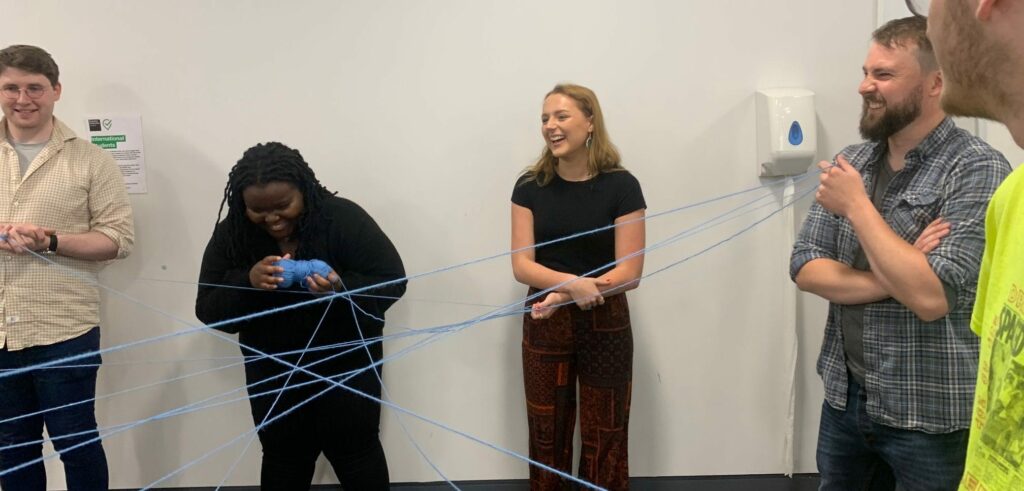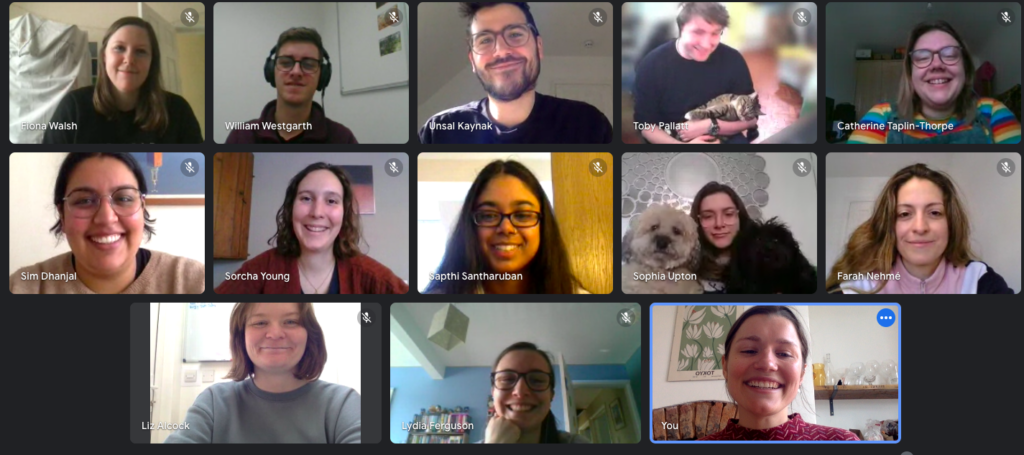This blog is part of a wider series on our People and Culture. For the next few months, we will be highlighting some of the core elements of our working culture, along with recommendations for embedding new practices within your own organisation. Keep an eye out for the October edition and check out the August blog on our Escape the City top 100 ranking.
Long before the pandemic brought working from home into the limelight, Student Hubs has been championing flexible and remote working models. We wanted to share with you why and how we make this work – from the importance of working well remotely to us as an organisation, to tips on how to foster a positive remote culture yourself.
Why we are talking about this
Student Hubs is a network organisation – simply put we make an impact in different geographical locations. This has meant over the past year alone we have had team members all across the country from Southampton to Leeds to Newport. As well as this, our teams operate over a range of structures – yes local Hubs work together a lot, but we also have network support teams where individuals running the same programme in different locations share ideas, peer support where individuals doing similar roles support each other, and operational functions such as impact measurement and communications which span the whole organisation.
It’s important that we operate in this way so that we are being consistent and driving change whilst also being truly embedded in the communities we work with. And it has meant 15 years of figuring out what effective remote teamwork looks like – and knowing when being in person just works best. We might not always be able to grab someone for a quick chat, or catch up with our colleagues over the water cooler, but we’ve learned other ways to develop our company culture and innovate.
How we do remote teamwork
Behind any remote team, is undoubtedly a suite of tools to keep them connected – but going one step further than that, the key is in how they use them.
At Student Hubs, we swear by Slack, a professional messaging tool. We have channels for different functions of our work, different programmes we run and also for more informal chats – our random channel hosting a lot of pet pictures and holiday updates. We also use the Donut chats function to pair people randomly each month for a fun virtual chat over coffee. More recently, Slack has introduced the Huddle function to jump into a conversation with our colleagues at the click of a button, and voice recordings to use instead of a message. Both of these features support us to resolve challenges and answer queries, often quicker than a written message. Plus voice recordings have a transcript feature so the recipient can choose how to digest the information shared.
As well as Slack we use the Google suite for collaborating. Working on the cloud in this way means we can work in the same document, from different locations, instantaneously. The comments and suggestions functions mean that we can dip into a colleagues document and leave quick feedback, supporting the team to engage productively with one another’s work. Key for collaboration. Google’s jamboard feature is also a great way to make whiteboarding and idea generating feasible virtually.
In terms of the meetings and activities we do, a key to our success is starting the week off on a Monday with our team meeting. Everyone shares their priorities and answers the question of the week – most recently this was if you could go anywhere in the solar system where would you go. These meetings allow us to feel involved with each other’s work, connect the dots and feel empowered to reach out to each other throughout the week. We also have a number of virtual clubs which different people in the team get involved in from Fantasy Football to crafting to our very own Book Club. These touchpoints keep the whole team in the loop with each other, whilst retaining the social spark which can be easily lost in remote environments.
What in person teamwork looks like to us
Even when you have remote teamwork down, there is a certain magic to getting together in person. Because we can all get the job done as a virtual team, for us, being in person is more about socialising and building up strong relationships.
On a local level Hubs can work in person with students on campus, quickly building up trust in their relationship. It can be easier to make those initial connections face to face, and gauge someone’s non verbal cues. Similarly, by being physically present in our communities we get to network with new partners, better understand emerging needs and be truly hands-on in the work we do.
On a national level we recognise the importance of getting together from time to time and using this space well. We meet bi-monthly for Team Time, a national day where all members of the Student Hubs team get together for training, collaborating and socialising. We plan these days carefully to include activities and interactions which couldn’t be done (as easily) virtually. Think moving around tables, writing sticky notes and physical icebreakers. Our managers also have four in person days a year, which provide a key motivation and accountability touchpoint for them. When thinking big and getting strategic there’s nothing like presenting in person and being challenged to spark new ideas. Without the barriers video calls can have including lagging internet and lack of body language, natural and flowing discussion can be a lot easier in person.
A team is made up of tools, processes and, most importantly, people. As an organisation we have put the tools and processes in place so that our people can thrive as a team – both remotely and in person.
If you’re interested in what we do and are wondering how to build a more effective hybrid team, we’ve included some top tips for you below:
- Find the tools which work for you. How do you want to communicate? How do you want to collaborate? Remember you need to embed these tools fully with training and clear expectations from the start
- Make sure you’re replicating the ‘water cooler’. Be that through a tool like Donut, a random channel on Slack, or encouraging the team to create and join clubs they’re passionate about. These connections are key to working well as a team
- Meet regularly and be flexible in your expectations of what this looks like. Cameras on or off, sharing in the chat bar or speaking, phone call instead of screen time – depending on the space you’re facilitating a variety of these approaches can be utilised
- When you are meeting in person, structure that time carefully to make the most of the dynamic. Think different activities and interactions you can facilitate which make the most of being face to face
- Reach out to us at info@www.studenthubs.org for information on our People and Culture training package


